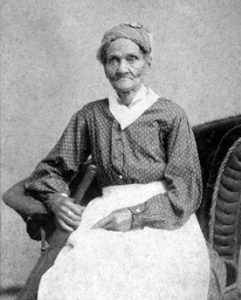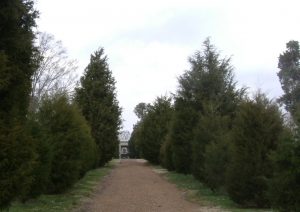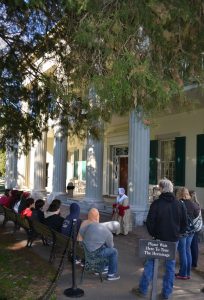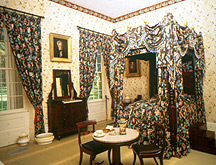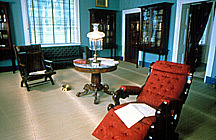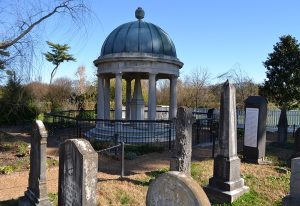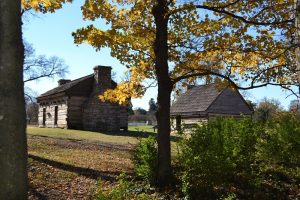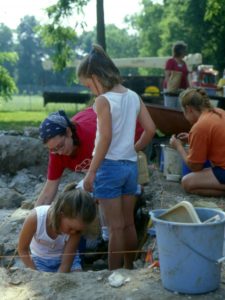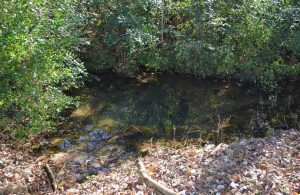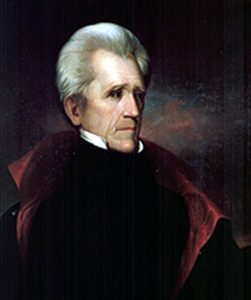Andrew Jackson was the seventh president of the United States. For most of his adult life he lived at The Hermitage, a mansion and cotton plantation in Nashville.
Today the home in which Andrew Jackson lived is preserved much the way it looked when he was alive. We’re going to take you on a short tour.
When you get to The Hermitage, your first stop will be the Visitor Center. They show a short film about the life of President Jackson and there is a museum with artifacts from his life.
Here is the thing to remember: ASK LOTS OF QUESTIONS. There are many tour guides, and they know a lot about Andrew Jackson and The Hermitage. Ask anything! The answers will make your visit more fun and interesting.
One thing that you will notice at the Visitor Center is that a lot of the displays have to do with the African-American slaves that used to live at The Hermitage. Why is this? Because most of the people who actually lived at The Hermitage during the time of Andrew Jackson were slaves.
At one time there were 150 slaves living at The Hermitage. In recent years, we have learned a lot more about the lives of these slaves.
Eventually you will want to leave the Visitor Center and walk the path to the museum.
Now there is something that we want to mention about the museum grounds as you walk through them. His nickname may have been Old Hickory, but Andrew Jackson loved cedar trees. You’ll see them all over the grounds.
Some of these cedar trees are very old; in fact, Jackson actually supervised the planting of some of the trees that are still there. However, many of them have died either of disease or been blown down by tornado since he planted them.
When you get to the front porch you’ll be greeted by a tour guide, who will take you into the mansion. They know a lot more about the interior of the place, but here are a couple of cool things that we will tell you in advance:
- Many preserved homes such as this one contain reproductions of items that were there before. Not this one. Almost all the things in The Hermitage — including the furniture and decorations — are the same ones that were there when Andrew Jackson lived there. “If President Jackson walked in this house today, he’d recognize just about everything,” our tour guide said.
-
* Because these objects are very old, each room is actually behind glass.
- The wallpaper that adorns the hallways was made in France. It was made in squares. If you look closely at the walls, you can see the edges of the square shapes.
-
The bed in President Jackson’s room is in the one in which he died on June 8, 1845.
- The books and newspapers in President Jackson’s office are the ones he owned and read when he was alive. By the way, he subscribed to and read 15 DIFFERENT NEWSPAPERS!!!
- As the guides will tell you, the two bedrooms upstairs on one side of the house were for children, while the two bedrooms on the other side were for guests. Ask your tour guide for the names of some of the people who stayed in the guest rooms.
Now we are going to take you out onto the grounds and show you some interesting sights to be seen.
Here is the tomb of Andrew and Rachel Jackson. Rachel Jackson died first, on December 22, 1828. Rachel Jackson died after her husband was elected president, but before he assumed office. When Andrew Jackson was inaugurated, he was still very sad about his wife’s recent death.
By the way, many dignitaries have paid their tributes at this tomb, including Presidents Theodore Roosevelt, Franklin D. Roosevelt, Lyndon Johnson and Ronald Reagan.
There is a log cabin on the grounds that was the home of an African-American slave named Alfred. Here is what the interior of the cabin looks like.
Alfred lived at The Hermitage longer than anyone else. He was born here and died here and was buried in The Hermitage garden next to Andrew Jackson’s tomb.
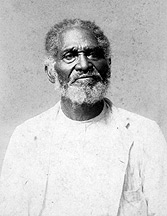 Here is a photograph of Alfred, whose last name would have been Jackson since his slaveholder’s name was Jackson.
Here is a photograph of Alfred, whose last name would have been Jackson since his slaveholder’s name was Jackson.
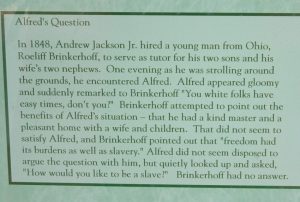 We found this sign (pictured to the left) about Alfred to be quite interesting. Click on this photo and read it.
We found this sign (pictured to the left) about Alfred to be quite interesting. Click on this photo and read it.
A short way away are these two log cabins that are known as the “First Hermitage.”
Believe it or not, these two cabins were originally where President Jackson and his wife Rachel lived before they built the big house. However, when the Jacksons lived here the farmhouse on the left was two stories tall. The cabin to the right was the original kitchen/slave cabin, where Alfred Jackson was born.
Another thing that you will notice on the grounds is some cotton growing.
Why? Because when Andrew Jackson lived here, The Hermitage was a 1,000-acre cotton plantation. Cotton that was grown here was picked by hand by slaves, then run through a horse-powered cotton gin to remove the seeds, then formed into bales, and then shipped to New Orleans.
There is a short trail called the Archaeology Trail that you can walk, and it is very interesting. Here is the story behind this trail:
As we mentioned before, most of the people who actually lived on the grounds of The Hermitage were African-American slaves. Most of them lived in small cabins, and as the years went by, the cabins fell down, or were torn down, or burned down.
Archaeologists learn about the past by digging old objects and buildings out of the ground and studying them. In the 1970s, archaeologists began digging up the ground at The Hermitage and finding all sorts of items used by slaves who lived there. The Archaeology Trail shows you some of what they have found, and continue to find.
Besides the remains of cabins, here is something else that is important that you’ll find on the Archaeology Trail: two springs!
Why is this such a big deal? Because if it weren’t for these springs, The Hermitage wouldn’t be here! When Andrew Jackson moved here more than 200 years ago, there was no water company to pump water to your house, and he lived too far from the Cumberland River to get his water directly from it. Because of these springs and the Sinking Creek, this was a good place to have a house and plantation.
Click here to be taken to The Hermitage’s official web site. On that site you will find more information about The Hermitage, resources for students and teachers, and instructions on how to organize a field trip.
The Hermitage is maintained by a private non-profit organization, so there is a fee to visit. In fact, has been open since 1889 and is one of the oldest historic site museums in the United States.


